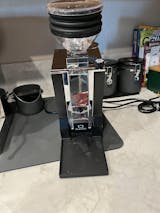Vibratory Pumps vs. Rotary Pumps

When it comes to espresso machines, the type of pump used can have a significant impact on the quality of your coffee. Two common types of pumps used in espresso machines are vibratory pumps and rotary pumps. In this article, we'll explore the differences between these two pump types and help you understand which one might be the best fit for your espresso machine.
Vibratory Pumps
Vibratory pumps are the most common type of pump found in home espresso machines. They use an electromagnetic coil to create vibrations that force water through the coffee grounds. Vibratory pumps are known for their affordability and compact size, making them popular choices for entry-level and mid-range espresso machines.
Pros of Vibratory Pumps:
- Cost-effective: Vibratory pumps are generally more affordable than rotary pumps, making them a great option for budget-conscious coffee enthusiasts.
- Compact size: Vibratory pumps are smaller and lighter, making them ideal for home use where space might be limited.
Cons of Vibratory Pumps:
- Limited pressure consistency: Vibratory pumps can struggle to maintain consistent pressure, which can result in variations in the extraction process and impact the quality of your espresso.
- Noise and vibration: Vibratory pumps tend to be noisier and produce more vibration compared to rotary pumps, which may be a concern for some users.

Rotary Pumps
Rotary pumps, also known as commercial-grade pumps, are commonly found in high-end espresso machines and commercial setups. They use a motor-driven rotor to generate pressure and move water through the coffee grounds. Rotary pumps are known for their reliability, consistency, and ability to handle high volumes of water.
Pros of Rotary Pumps:
- Pressure consistency: Rotary pumps excel at maintaining a consistent pressure throughout the brewing process, resulting in a more precise extraction and better-tasting espresso.
- Quiet operation: Rotary pumps operate quietly, making them suitable for environments where noise is a concern, such as office settings or coffee shops
Cons of Rotary Pumps:
- Higher cost: Rotary pumps are typically more expensive than vibratory pumps, which can be a deterrent for budget-conscious buyers.
- Larger size: Rotary pumps are larger and bulkier compared to vibratory pumps, requiring more space and making them less suitable for compact home setups.
Which Pump is Right for You?
Choosing between a vibratory pump and a rotary pump depends on your specific needs and preferences. If you're a beginner or have limited space, a machine with a vibratory pump might be a suitable choice. On the other hand, if you're a coffee enthusiast seeking precision and consistency, a machine equipped with a rotary pump is worth considering, especially if you're willing to invest in a higher-end espresso machine.
In conclusion, both vibratory pumps and rotary pumps have their pros and cons. Consider factors such as budget, space availability, noise tolerance, and desired extraction precision when selecting the pump type for your espresso machine. Regardless of your choice, a well-built and properly maintained machine, paired with quality coffee beans, will pave the way for a delightful and flavorful cup of espresso.



















